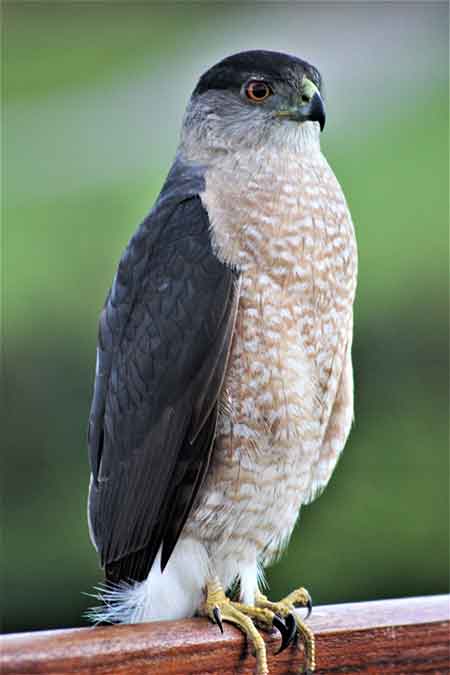
Cooper's or Sharp-shinned Hawk
around 7:00 PM at the Oval
Photograph (DSLR)
© 2017 Hesam Hamledari
April, 2017
|
|
Hesam Hamledari
Stanford note: Hesam Hamledari, PhD Student,
Department of Civil and Environmental Engineering, wrote:
"I was lucky to catch a glimpse of this beautiful bird resting on one of the benches in the Stanford Oval. Fortunately, the area was not crowded, and I had my DSLR with me. I slowly approached the bird, and this put me in a perfect angle and distance to capture this beauty."
Science Art notes: Is it a Cooper's Hawk or a Sharp-shinned Hawk? Both are found on campus.
Wildlife ecologist Steve Rottenborn, who as studied birds of the San Francisco Bay area since 1992 explains: The darker “cap”, contrasting with the gray cheeks and being darker than the rest of the upperparts, is typical of an adult male Cooper’s. A Sharp-shinned would have brownish cheeks, and the crown would be the same color as the nape and back.
A good online image for seeing the difference between adult male Sharp-shinned (left) and Cooper’s (right) is found here.
Sharp-shinned Hawks are probably more common on campus during migration and in winter, but only Cooper’s Hawks breed here, so they are more frequently seen on campus from May through August.
Steve adds: Cooper’s Hawk used to (e.g., 30 years ago) be considered a scarce and declining bird that shunned human activity. Over the past few decades, they have become increasingly common as breeders in urban and suburban areas. My guess is that the selective pressures changed so that Cooper’s Hawks with genes coding for avoidance of humans (necessary back when people shot hawks like these) were no longer selected for. Rather, Cooper’s Hawks with genes coding for greater tolerance of human activity began to be selected for because backyards and places like Stanford’s campus provided suitable nesting sites with abundant prey in the form of mourning doves, California towhees, and other “suburban” birds.
|